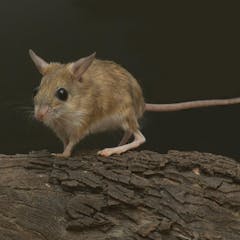
Articles on Rats
Displaying 1 - 20 of 52 articles

Rats are well known to cause problems for humans. But we need a new approach to our relationship with them.

There’s shocking new evidence of rodenticide poisoning in Australia’s nocturnal predatory birds. High concentrations of the active ingredients were found in 92% of the 60 dead birds they tested.

Here’s what determines if a problematic wild animal is saveable or cullable.

Recent research suggests rats may not have played the critical role in keeping plague going in Europe.

Rats are disrupting the flow of nutrients towards the sea on many tropical islands – this has consequences for fish behaviour and the wider ecosystem.

Rodents are the most numerous – and least studied – of all Earth’s mammals.

Australia has more than 60 species of native rodents found nowhere else in the world. New research used museum specimens to find out how they got here.

With temperatures plunging, rodents have started seeking the warmth and food inside our houses. Here’s how to deal with them effectively and humanely – without accidentally catching native animals.

A new study shows that when free-ranging cats are more than a few blocks from forested areas in cities, such as parks, they’re more likely to prey on rats than on native wildlife.

Given the small number of people that have been affected, the threat to the wider community is low.

Male rats transfer different hereditary information to their offspring depending on their age.

The genome of hepatitis D doesn’t resemble any known virus, making its origin a mystery. But by mining virus sequences from genetic datasets, a new study may have found the answer.

Rats used in mine-clearing operations are changing the perception of the country’s military, which is viewed with suspicion after decades of civil war.

Framing cats as responsible for declines in biodiversity is based on faulty scientific logic and fails to account for the real culprit – human activity.

Climate change, globalization and concerns about rat poison soon could drive rat infestations to levels not seen in centuries. One way to curb them is getting humans to stop wasting food.

The Euler spiral has helped engineers for over 100 years – now we’re using it to understand biology.

Cities often embark upon drastic and expensive eradication campaigns designed to rapidly rid the city of pests like rats. But are the surviving rats stronger or weaker than before?

Some animals, like rats, learn linguistic patterns better than humans can.

Black rats are originally from India and brown rats are originally from China.

Genetic analysis shows that urban rats prefer to stay near their relatives; however, some of them migrate. Knowing this could help with pest control efforts.
